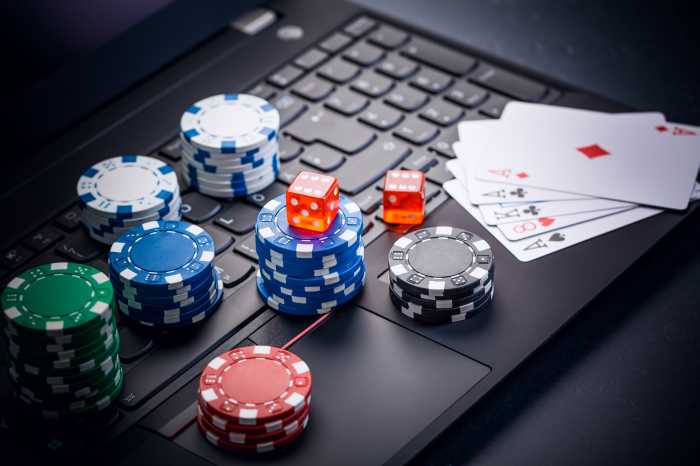On canvas, she knows when it’s right
Spend a few sweaty mornings watching her work out at Gleason’s Gym, and a picture begins to emerge. Based on the frequent and precise body shots she delivers while sparring with George — whose height and width and natural padding far exceed her own — you wouldn’t peg Jo Ellen Van Ouwerkerk as the type who can spend weeks or even months pursuing satisfaction with the way she’s depicted a face, or the dynamic she’s uncovered between a woman flanked by stuffed kangaroos.
Good thing then, that the part of herself she pours onto the canvas stretched across a boxing ring can be accessed in seconds. Her eyes see an opening; her brain tells her to make a move; her hands go to work, and what’s done is done.
That this is occurring at a time of the day better suited to fighting the snooze alarm makes her Saturday ritual seem all the more jarring — considering certain assumptions you’ve made based on paintings seen at a Lower East Side gallery long before accepting the invite to see her spar at a Brooklyn boxing gym watched over by a calm presence in the front office (that would be Bruce, who happens to be Van Ouwerkerk’s husband).
Now here’s a person who’s been boxing for 18 years, and excelled at martial arts before that. And as it turns out, all along, she’s had another shade to her decisive athletic temperament — one that allows for the long bouts of contemplation necessary to reach a point where the women she paints occupy a state of confident grace (often while surrounded by chaotic or unsettling images). Lizards or flames in their hair don’t seem to phase them. Nor does their creator seem particularly concerned when the same studied technique of jab, jab, punch she employs against an opponent is thrown back at her with equal or greater force.
A certain place and time
“Van Ouwerkerk’s paintings, which focus exclusively on the depiction of women, reveal an unusual stylistic blend,” observes Chelsea Now art critic Stephanie Buhmann.
“Nineteenth Century portrait photography, the works of Dante Gabriel Rossetti and Edward Burne-Jones, the famous renditions of women by John Graham — as well as the collages of Joseph Cornell — are all reference points. At times, her compositions even pay homage to specific masterpieces, such as Picasso’s harlequins of the Rose Period.
“However, Van Ouwerkerk does not simply follow. With a convincing original outlook, she employs this eclectic vocabulary to portray her subjects in a manner that is at once timeless and contemporary. Meanwhile, Van Ouwerkerk’s compositions range in complexity. Forced into the position of a voyeur, the viewer can encounter her women during intimate moments. In Birds Flying Backwards (1980), for example, our gaze seems to be able to penetrate closed doors. We get to study the subject as she finds herself alone and lost in thought. At other times, we observe them as they engage in more complicated scenarios. Some of Van Ouwerkerk’s most ambitious canvases, such as Dancing Skeletons (1999), depict multiple figures. In these works, women are forced to co-exist in one picture plane, yet without clear relations or interactions. Van Ouwerkerk provides snapshots rather than narratives.
“In this body of work, there are no unfolding storylines. The women we encounter are simply there, without a past or the insinuation of a future. Van Ouwerkerk, so one gathers, does not aim to lure us into mysterious lands. Instead, she guides our gaze inward. By confronting us with her detached figures, who do not reveal emotions, she makes us self-conscious. Most importantly, she makes us aware of our own place and time.”
Making the artist/athlete connection
“I like playing on Saturdays with friends,” Van Ouwerkerk says of her regular sparring sessions. “It’s great exercise, and constantly fascinating. You can always try to perfect something or find a more economical movement. But I’m not there to compete. I am interested in trying something new, a new combination, different footwork…trying to change a pattern of movement.
“I like what I do. You have to have a lot of energy and you have to be disciplined,” she notes — although as the conversation shifts, it’s not clear if she’s referencing art or athleticism. Probably both. What she does have to say about the benefits and necessities of exercise is, “I really believe it’s got to be a part of your whole life. It keeps you from getting sick. Or if you do get sick, you recover more quickly. It’s just part of the discipline. You have to be disciplined to get something done. I had breast cancer twice, and I never stopped training [at Gleason’s] with Hector. It keeps you from thinking that there’s anything different going on or anything wrong. Because you’re still working out. You’re still training.”
On canvas, she knows when it’s right
“Take any series of objects within a room,” says Van Ouwerkerk when asked about her sometimes immediate but more often studied process of getting it just right. “The table, the wall, the floor, a lamp. It all has to work. You have to look at it and say ‘that rings true to me. I don’t know why, but it does.’ Like if you painted a table, then you’d put a little statue next to it. No, that doesn’t look right. When you finally end up with a taxidermied bird, let’s say, it almost becomes a magical relationship between the two…but what’s the reason? Is it the style of the painting? Is it the color? I don’t know, so I just keep trying until, ‘Okay, that’s correct…it always had to be those two objects together to emphasize the mood you’re after.’ ”
Regarding that process as it played out during the creation of Chinese Fingernails, Van Ouwerkerk recalls, “I knew there would be a woman standing, and on her fingers are these metal nails that the elite would wear. When I conceived the idea, there was going to be a mask on half of her face, with pointed, stylized ears. I thought, ‘This should be a beautiful image.’ So I tried it and tried it and tried it, and it didn’t look right. It should have worked, but it didn’t. So I had to paint over the mask.” Eyeing the painting as we speak, she says, “In the background are these stuffed animals that look kind of like kangaroos, standing on their hind legs. Believe me, I didn’t start out planning that. But after a period of putting other things in, it looked right.”
And though she references words like “magical” and “mystical” when asked to explain that knowing sense of when objects finally relate, don’t conjure an image of Van Ouwerkerk lighting incense and meditating in her longtime West Village or recently constructed Arizona studio in the hopes of invoking a visit from some supernatural muse. “I don’t think it’s that interesting,” she says of the artist’s process from blank canvas to end game. “To me, it’s tedious. And frustrating. Maybe that’s kind of my Midwestern work ethic,” she reasons, “that I treat painting as a job. I don’t treat it as being something special and precious emotionally, like the cliché of an artist having to be inspired. But it is magical. You just have to go beneath the surface to find the magic. Every object has a magical essence, and I try to find the right combination [of essences] with color and style. But it can’t be forced, no matter what you planned.”
On why Van Ouwerkerk is represented by Woodward Gallery — and what draws her to collectors — Kristine Woodward explains, “We see something original and unpredictable within her paintings. There is a sensual, mystical quality to her pictures. She touches on the old and makes it contemporary. It is as if her women travel through time and are ageless. People universally respond to Jo Ellen’s work through the subject’s eye contact. Her women are sirens drawing us into their individual situation. She provokes the viewer. Her characters are seen for the one frame of their story, and her vision broadens our reference for normal. We follow marvelously entranced in their personal and curious situations.”
What those situations mean, Van Ouwerkerk maintains, is, well, personal (and true, and unique) according to what’s lurking behind the eye of the beholder. “I love that someone can see something that I never thought at all about,” she notes — even when the viewer may be grafting their own ink blot agenda onto the work and emerging with a picture of the artist that doesn’t necessarily fit her own. “Because I’m painting women, you’re making up your own stories that have to do with your psyche.” Of analysis (or perhaps more accurately, psychoanalysis) she’s received from viewers of Women In Piles Of Wood Waiting To Burn, the artist reasons, “You only see trees on fire, a pile of wood and a woman standing on it. It had nothing to do with being burned at the stake or being punished. To me, it was just a beautiful image.”
Jo Ellen Van Ouwerkerk’s most recent exhibition — “Curious Sanctuary” — ran at Woodward Gallery from January 29-March 19, 2011. Her work can be viewed, by appointment, at Woodward (133 Eldridge St., btw. Broome & Delancey Sts.). Hours of operation: Tues.-Sat., 11am-6pm; Sun., 12-5pm. Call 212-966-3411 or email art@woodwardgallery.net. To access selected works online, visit woodwardgallery.net/vanouwerkerk.





























